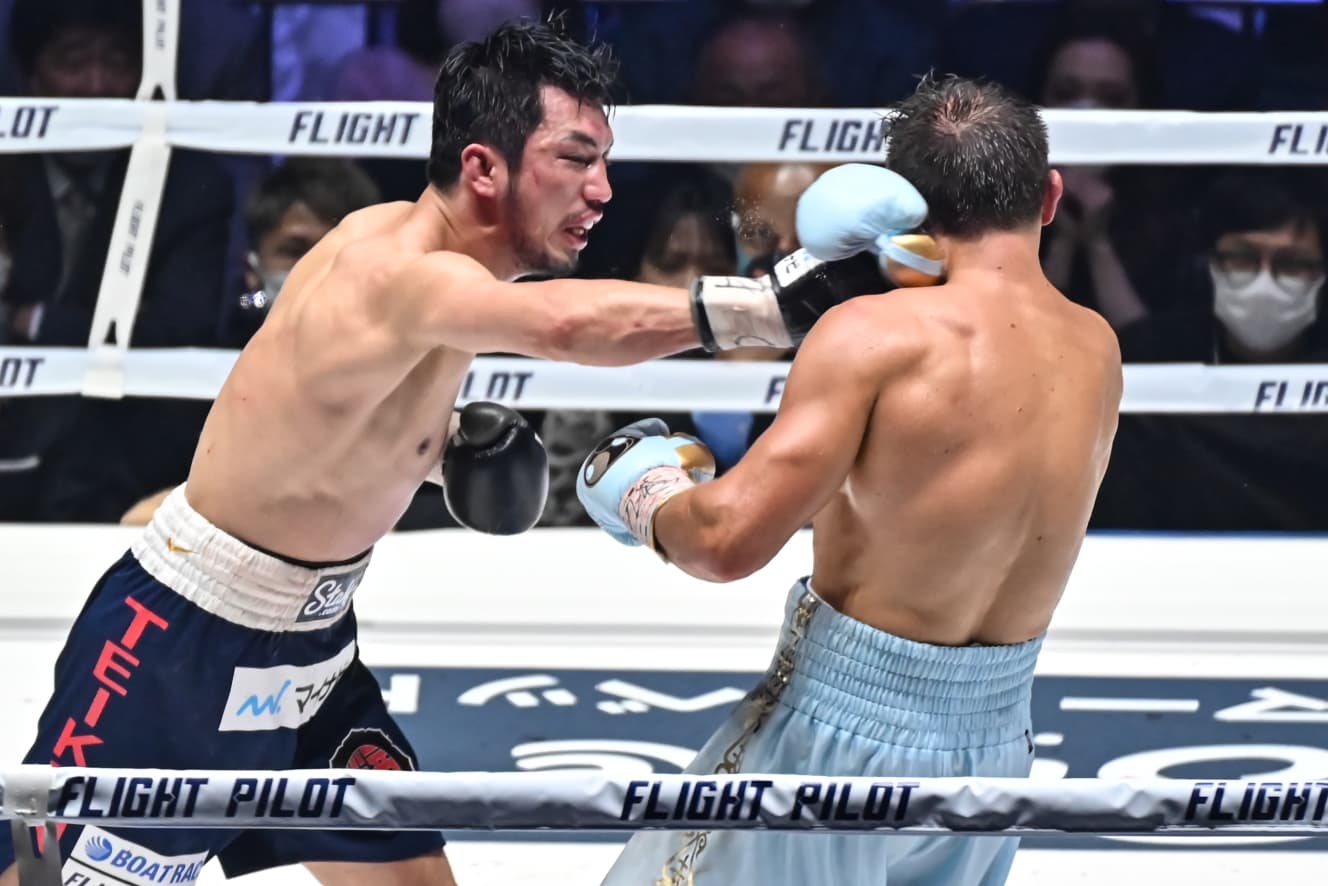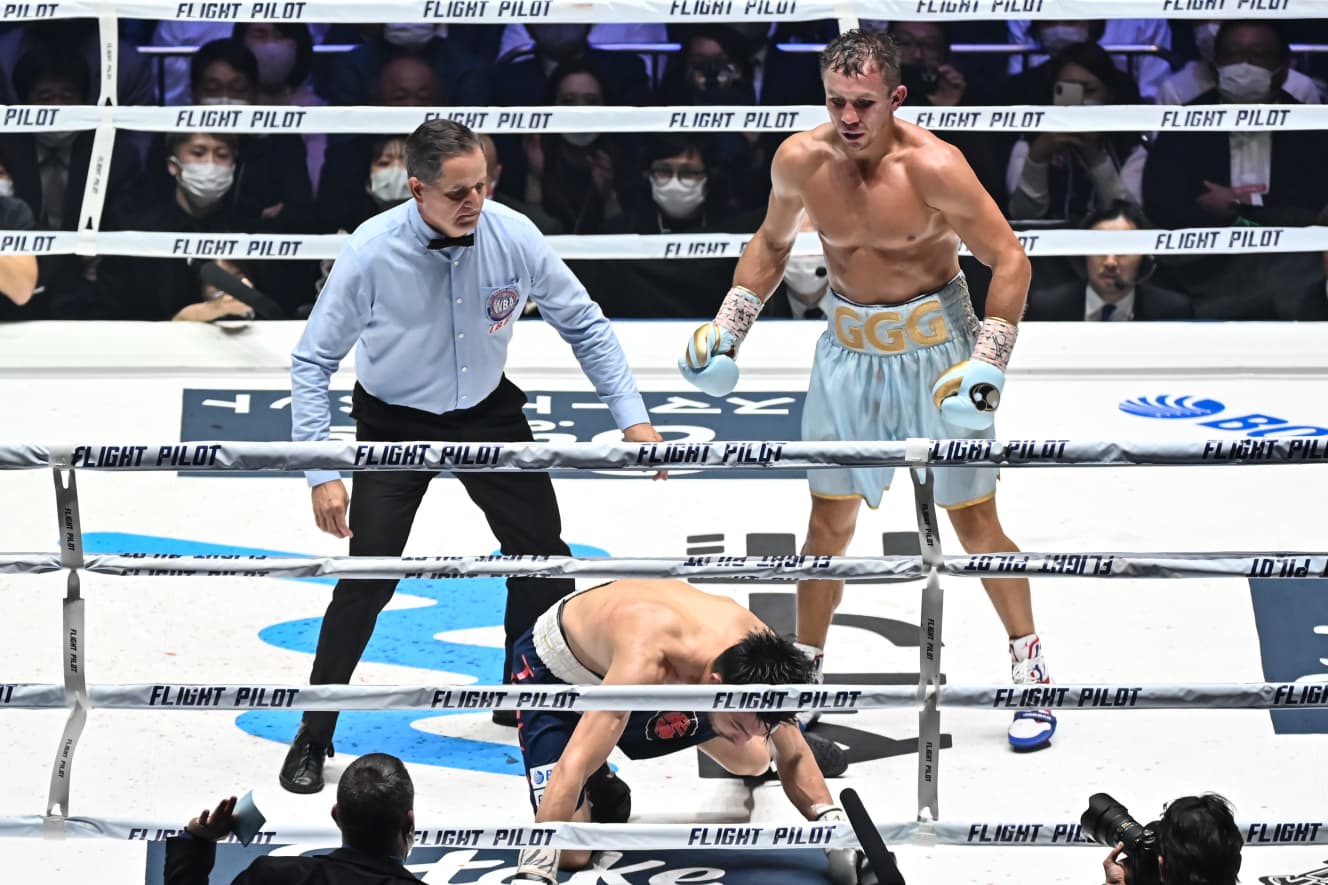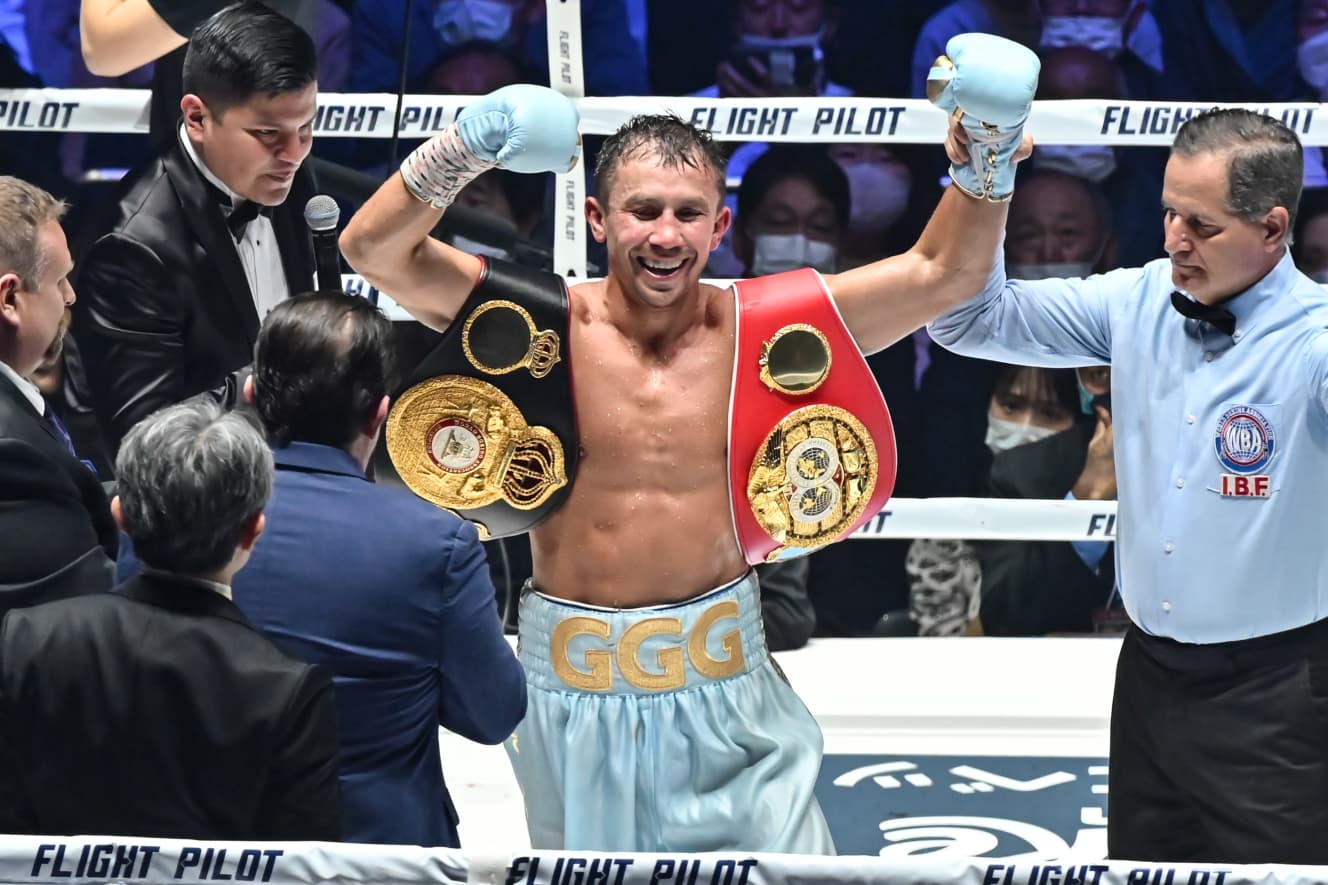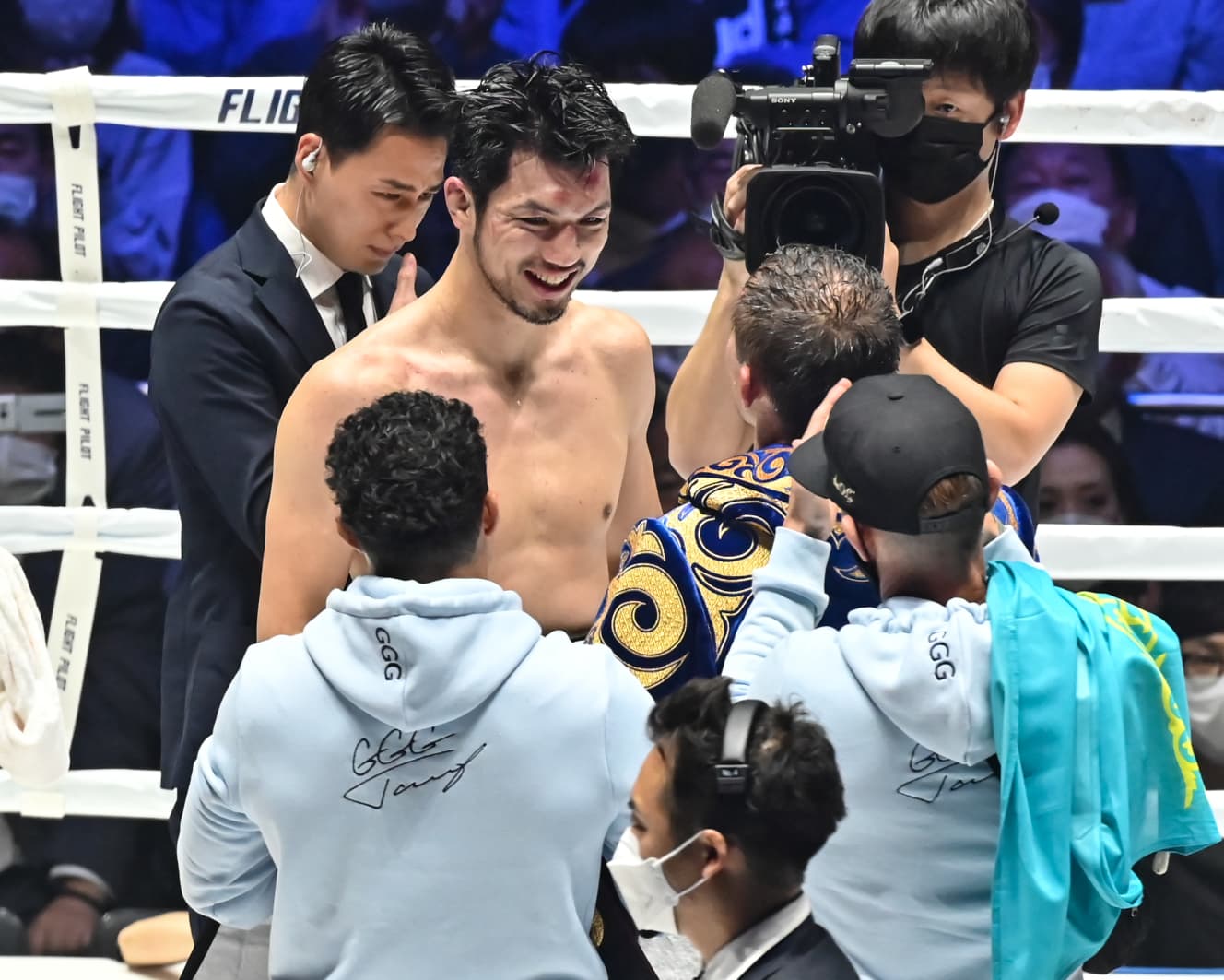The Real Meaning of the Gown Sent to Ryota Murata by the “Strongest Man” Golovkin
Round 9, 2:11. Almost as soon as Ryota Murata crumpled to the canvas after being hit by a right hand from Golovkin, a towel was thrown in from the blue corner.
It was the decision of Akihiko Honda, president of Teiken Gym, to throw in the white towel.
The WBA/IBF unified middleweight title match was the biggest boxing event in the history of Japanese boxing, with the total fight money of both fighters estimated at 2 billion yen. Due to the Japanese government’s waterfront measures, the match was almost decided and then drifted away.
If only it hadn’t been for Corona, it would have been decided. It’s really tough. Golovkin’s visa was also very difficult to get.
This bout became a mega-fight only because WBA Super Champion Ryota Murata faced IBF champion Gennady Gennadyevich Golovkin (nicknamed GGG), one of the most talented boxers in the world today. Golovkin is ranked first or second among the world champions who have faced Japanese opponents in the past in terms of ability and name recognition.
Boxing fans can recall fights in which Japanese boxers challenged world champions such as Guts Ishimatsu’s September 8, 1973 fight in Panama against Roberto Duran, who later won four weight classes and was feared as “Stone Fist,” and the October 10, 1975 fight between Golovkin and Duran. One such fight was the one that took place at the Kuramae Kokugikan on March 12, when Royal Kobayashi took on Alexis Arguelló, who would later win a three-weight championship.

Nevertheless, the matchups between these big names and the Japanese came at a time when their opponents were in the process of developing. Golovkin had already established an unassailable position, and the fact that it was a unification fight between champions, as well as a historic middleweight title match, made it an unparalleled showcase.

Although it was champion vs. champion, Murata positioned himself as the challenger.
Challengers are easier to take to heart, aren’t they?
Murata said so in an interview three weeks before the match.
Against Golovkin, he said, “First of all, I have to keep my distance in the early rounds. I’m going to put pressure on him by making him think, ‘This guy is hard to deal with. Even if I lose points, I won’t let the fight drift from the first to the third round. He came to the ring with a plan: “I’m going to set him up from the first round,” he said.
In fact, Murata proceeded as planned from the start of the fight. He fought not to back down, and his body blows shined. His aim to land straight right hands up and down was also good.
Seconding the fight, trainer Sendai Tanaka said during the interval after the first round, “He’s looking good. Keep it up.
He didn’t like the body, and up until about the fifth round, I could go! But gradually, Golovkin started to respond. He is 40 years old, so he may not have the one-hit-kill kind of power he used to have. Or maybe he did not dare to strike with all his might. However, he was good at subtly changing the angle and trajectory of his punches and applying them in a steady manner. Murata’s straight right hand was also hit separately to the face and stomach, but his punches to the upper part of the body did not hit cleanly.
I thought I was going to chip away at Golovkin, but he was the better fighter. That’s all I can say about it, ” said trainer Tanaka.

Golovkin said at the post-fight press conference, “We were both on the edge of the fight. I gradually began to get a better sense of the distance, and my punches began to hit”.
The WBA champ was defeated. However, Ryota Murata’s head-on challenge to the strongest champion and the way he gave it everything he had left the audience was very exciting to watch. It was a fight that more than adequately conveyed the appeal of the sport of boxing.
Chairman Honda also commented, “He showed us a great fight.” As Murata embraced Golovkin in the ring, there were shouts of “Thank you! and thunderous applause.
In an interview three weeks before the fight, I had asked Murata about the episode in which he cried over something his father had said to him shortly before his debut.
Murata’s answer was as follows
I think he was in a tight spot, and he was being driven. My father sent me an e-mail that really hit me hard. He showed us a picture of his son, who was two years old at the time, jumping from the sofa over and over again.
My father said, ‘He’s so happy he can do that. He’s happy to be able to do something he couldn’t do before. He was doing his best to do it in front of everyone. Human beings like to grow. And when people see you become able to do something you couldn’t do before, they are also happy to see you do it.
When my father said to me, “Ryota, you should feel that way, too,” I thought, “Yes, I have experienced many things since becoming a professional fighter, and I have become able to do this kind of thing. I thought that my debut match was an opportunity to showcase this. I thought, ‘Let’s focus on that, not on whether I won or lost,’ and I felt much better.
Since winning the gold medal at the London Olympics and making his professional debut on August 24, 2013, Murata has been increasing what he can do. Even when facing the strongest man in the middleweight division, Murata’s mentality kept him on the attack without fear. He was forced to take two years and four months off due to the new coronavirus, but he has steadily improved himself, which must have been a plus for him. With an unbreakable spirit, he kept pushing forward no matter how many punches Golovkin threw at him.
Of his 19 fights, the Golovkin fight was his best bout.

I don’t know how much stronger I am as a boxer, but as a person, what are you? I have time to ask myself, “What is the best way to do this? It’s now before the Golovkin fight, so I guess it’s because I have an important match ahead of me.”
Because the preparation was good, the match was heated.
Generally, Japanese boxers come to the ring in flashy gowns when they become main eventers. Murata, however, walked down the aisle in a T-shirt the entire time. He has been asking himself how he should live his life and always thinking about growing as a human being, without being distracted by unnecessary things. He had no need for a gown.
When I asked him about this point, he said, “I don’t need a gown.
If a sponsor asks me to wear a gown, I will wear one, but right now I don’t need one, so I don’t wear one. I never thought about it. I don’t care at all.
But this time, after the fierce battle, Murata stepped out of the ring wearing a gown for the first time. Golovkin presented him with a chapin, the traditional costume of Kazakhstan, and he put it on. Wearing a blue chapin with the letters GGG on the back, Murata repeatedly bowed to his fans before disappearing into the waiting room.
At the post-fight press conference, Golovkin said, “In Kazakhstan, we have a custom of giving chapans to the people we respect the most. I expressed my respect for Ryota Murata,” he said, speaking from his heart.

Murata did not invite his family, who were more important to him than anything else, to the match.
He said, “I don’t intend to show anything to my son, who is in the fifth grade, and my daughter, who is in the third grade. But I am working very hard, and I think the match will be a hard fight. Through my experiences, I hope I can teach the kids and anyone else who sees me something in the future.”
Having said that, he put himself out there.
The children will soon know the meaning of the chapin their father held in his hand. And they will understand how their father fought so bravely and inspired the whole country.
Interview and text: Soichi Hayashi Photo: Hiroaki Yamaguchi
